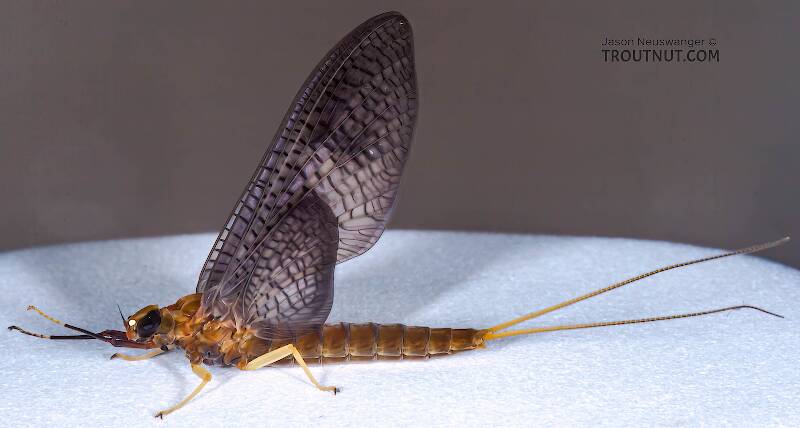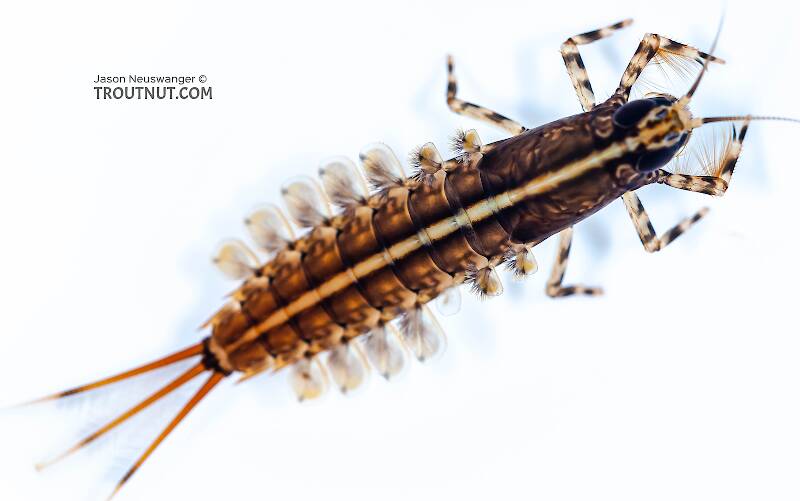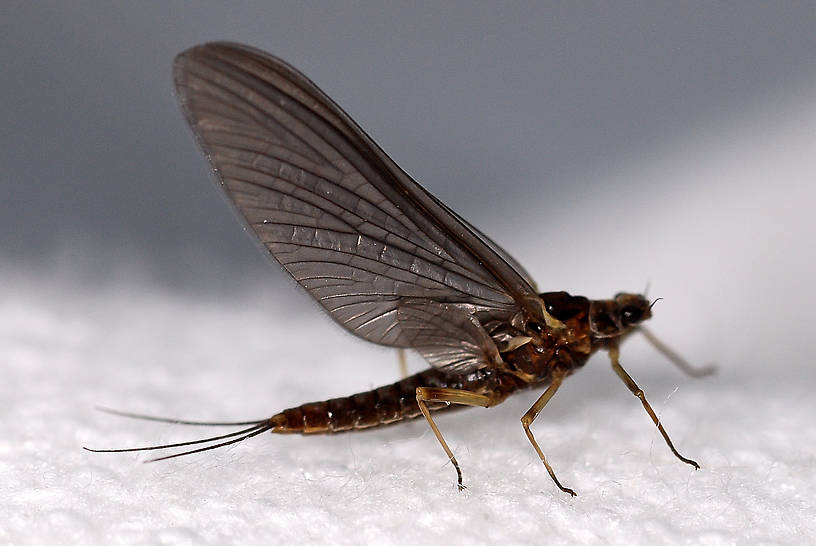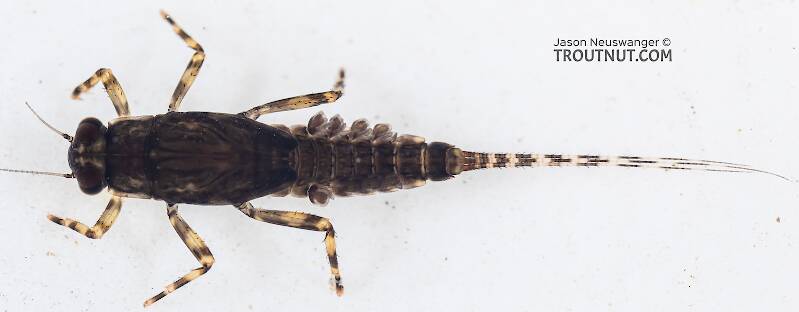
Hex Mayflies
Hexagenia limbata
The famous nocturnal Hex hatch of the Midwest (and a few other lucky locations) stirs to the surface mythically large brown trout that only touch streamers for the rest of the year.
Featured on the forum

This is the first of it's family I've seen, collected from a tiny, fishless stream in the Cascades. The three species of this genus all live in the Northwest and are predators that primarily eat stonefly nymphs Merritt R.W., Cummins, K.W., and Berg, M.B. (2019).

Troutnut is a project started in 2003 by salmonid ecologist Jason "Troutnut" Neuswanger to help anglers and
fly tyers unabashedly embrace the entomological side of the sport. Learn more about Troutnut or
support the project for an enhanced experience here.
White-Gloved Howdies
Like most common names,"White-Gloved Howdy" can refer to more than one taxon. They're previewed below, along with 5 specimens. For more detail click through to the scientific names.
Mayfly Species Isonychia bicolor
These are often called White-Gloved Howdies.
This is by far the most important species of Isonychia. Many angling books once split its credit with the species Isonychia sadleri and Isonychia harperi, but entomologists have since discovered that those are just variations of this abundant species.
See the main Isonychia page for more about these intriguing mayflies.
See the main Isonychia page for more about these intriguing mayflies.
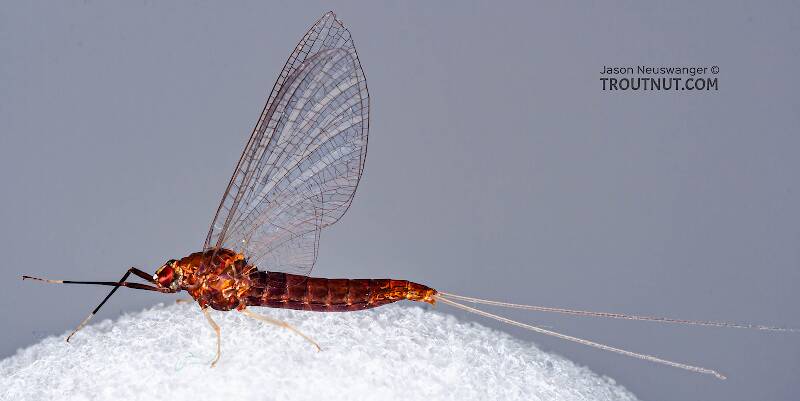
I collected this female together with a male.
See 16 more specimens...
Mayfly Species Ephemerella tibialis
These are very rarely called White-Gloved Howdies.
Ehhemerella tibialis (Little Western Red Quill, Little Western Dark Hendrickson) is a common western species that can be very important at times. It is perhaps also one of the most confusing species. Unlike it's western generic counterparts the species is described as dark and their females produce dark eggs. Until recently, it was classified in the Serratella genus with species that share these traits. Regardless, it is the only small, dark ephemerellid the western angler is likely to find important. Favorite patterns used for size 18 Pale Morning Dun hatches tied in eastern Dark Hendrickson colors should be the ticket.
As with many of it's sister species it is widely adaptable and may be variable in its appearance. Scientific literature and many angling sources describe it as a small dark mayfly. Not everybody agrees. Ralph Cutter, West Coast author of several angler/entomology books and articles describes it in Sierra Trout Guide as a much larger pale mayfly and dubs it the Creamy Orange Dun. He also mentions the nymph as being easy to recognize by the faint dorsal stripe running down its back and its often fiery brownish red color. These descriptions also match a variation of the ubiquitous and common Ephemerella excrucians.
As with many of it's sister species it is widely adaptable and may be variable in its appearance. Scientific literature and many angling sources describe it as a small dark mayfly. Not everybody agrees. Ralph Cutter, West Coast author of several angler/entomology books and articles describes it in Sierra Trout Guide as a much larger pale mayfly and dubs it the Creamy Orange Dun. He also mentions the nymph as being easy to recognize by the faint dorsal stripe running down its back and its often fiery brownish red color. These descriptions also match a variation of the ubiquitous and common Ephemerella excrucians.
See 4 more specimens...
References
- Merritt R.W., Cummins, K.W., and Berg, M.B. 2019. An Introduction to the Aquatic Insects of North America (Fifth Edition). Kendall/Hunt Publishing Company.


